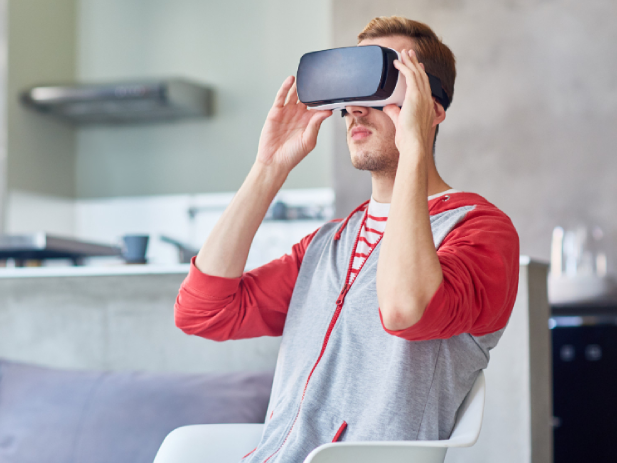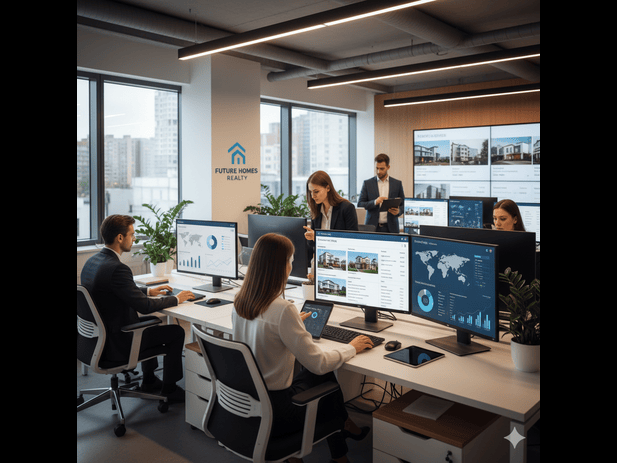Introduction
The world of technology is evolving faster than ever, and one of the most exciting innovations of the decade is Augmented Reality (AR). From social media filters to immersive shopping experiences, AR has transformed the way people interact with digital content. In 2025, AR is no longer a luxury—it’s becoming a mainstream tool for businesses and consumers alike.
Among the most popular AR innovations is the AR Zone App, which has created a new benchmark in mobile experiences. Initially introduced by smartphone giants like Samsung, AR Zone has evolved into a multi-functional AR-powered platform that allows users to play with 3D objects, create AR emojis, and explore interactive experiences.
For businesses, AR Zone-style apps open the door to next-level customer engagement. Whether it’s letting shoppers try on clothes virtually, visualize furniture in their living room, or use AR-based learning, the possibilities are limitless.
? In this blog, we will explore everything about AR Zone App 2025—from what it is, its features, and benefits to how you can build one for your business with the help of expert developers like Corewave.
What is AR Zone App?
The AR Zone App is an augmented reality-based mobile application that allows users to interact with digital content in a real-world environment. It combines a smartphone’s camera, AI algorithms, and AR SDKs to overlay 3D objects, animations, emojis, and stickers onto real-world visuals.
Initially, AR Zone was pre-installed in select Samsung smartphones, but today, its concept has grown into a global AR trend. Businesses are now creating custom AR Zone-like apps to deliver personalized and immersive experiences to their users.
Some examples of AR Zone capabilities include:
- Turning your selfie into a 3D AR emoji.
- Drawing AR doodles that move in real-time.
- Placing 3D furniture in your room before buying.
- Trying on makeup or clothes virtually.
- Using AR tools for training, education, or gaming.
In short, AR Zone Apps bridge the gap between reality and imagination, making digital experiences interactive, engaging, and useful.
Key Features of AR Zone App
The reason AR Zone Apps are trending in 2025 is their rich set of features. These features not only entertain users but also add real value to businesses and industries. Let’s break them down:
1. AR Emoji Camera
With the AR Emoji Camera, users can turn their selfies into animated 3D avatars. These emojis mimic facial expressions and movements in real-time, making chats and social media interactions more fun and personalized.
2. AR Doodle
This feature allows users to draw or sketch in 3D space using their phone’s camera. Imagine writing someone’s name in the air, and it stays there like a floating text! It’s widely used for creative videos, social media posts, and fun content creation.
3. AR Stickers
AR stickers are animated objects or characters that can be placed in the real environment. For example, you can drop a cartoon animal into your room or add holiday-themed AR effects while clicking photos.
4. 3D Object Creation
The ability to create and manipulate 3D objects is another highlight. Businesses in furniture, automotive, or eCommerce industries use this to let users visualize products in their space before making a purchase.
5. Virtual Try-On
One of the most powerful features of AR Zone Apps is virtual try-on. From clothing and shoes to makeup and accessories, users can try products digitally before buying, reducing return rates and improving purchase confidence.
6. Interactive Learning & Gaming
Beyond fun, AR Zone is finding serious applications in education and gaming. Students can learn complex concepts through AR simulations, while gamers can enjoy immersive experiences with AR battles, puzzles, and role-playing.
Why AR Zone App is Popular in 2025
In 2025, AR Zone Apps are not just a tech gimmick; they have become a mainstream necessity. Multiple factors are driving their popularity across industries:
1. Widespread Smartphone Adoption & 5G
With affordable smartphones and lightning-fast 5G internet, AR-based apps run smoothly without lag. High-resolution displays, powerful GPUs, and advanced cameras have made AR more realistic and accessible.
2. Improved AR SDKs & Frameworks
Earlier, AR was limited due to poor software support. But today, SDKs like Google’s ARCore, Apple’s ARKit, and Vuforia allow developers to create advanced AR features. These platforms support face tracking, motion detection, object recognition, and environment mapping, making AR experiences far more engaging.
3. Social Media Influence
Apps like Snapchat, Instagram, and TikTok have popularized AR filters. Users now expect the same interactive experience in every app—be it shopping, gaming, or learning. AR Zone Apps provide exactly that.
4. Rising Demand for Immersive Shopping
Modern consumers want to “experience before they buy.” AR Zone Apps allow shoppers to try on clothes, test makeup shades, or check how furniture looks at home. This reduces product returns and boosts sales.
5. AR in Metaverse & eCommerce
With the growth of the Metaverse, AR Zone Apps act as a gateway to hybrid experiences where digital and physical worlds merge. For eCommerce brands, this is a golden opportunity to provide futuristic shopping experiences.
Benefits of AR Zone Apps for Businesses
AR Zone Apps are not just consumer-centric; they bring measurable advantages to businesses. Here’s how companies across industries are leveraging AR in 2025:
1. Improved Customer Experience
AR enhances customer journeys by making apps interactive and engaging. For example, a clothing retailer can allow customers to try outfits virtually, while an interior design brand can let users visualize furniture layouts at home.
2. Boost in Sales Conversions
When customers can “see” how a product looks or works in real-time, their purchase confidence increases. This directly impacts conversion rates and reduces cart abandonment.
3. Stronger Brand Engagement
AR-powered experiences create memorable interactions. Brands using AR apps stand out in crowded markets and build stronger emotional connections with their audience.
4. Data-Driven Personalization
AR Zone Apps collect valuable data—like what products users try on most, how long they engage with features, and which objects they interact with. This helps businesses offer personalized recommendations.
5. Competitive Advantage
In 2025, not all businesses have adopted AR yet. Those who invest early in AR Zone Apps gain a clear competitive edge by positioning themselves as innovative leaders.
6. Applications Across Industries
- Retail & eCommerce: Virtual try-ons, 3D product demos
- Real Estate: Virtual property tours
- Healthcare: AR-based training and diagnosis
- Education: Interactive learning simulations
- Entertainment: AR gaming & filters
How to Build an AR Zone App in 2025 (Step-by-Step Guide)
Building an AR Zone App is not a one-day job—it requires strategic planning, the right technology stack, skilled developers, and continuous updates. Here’s a step-by-step breakdown for businesses planning to invest in an AR-powered app in 2025:
Step 1: Market Research & Audience Targeting
Before development begins, businesses must understand their target audience.
- Who will use the app? (Gen Z, millennials, enterprises, gamers, etc.)
- What is the main purpose? (eCommerce try-ons, entertainment, education, healthcare training)
- What competitors already exist?
Thorough research helps define the unique selling proposition (USP) of your AR Zone app.
Step 2: Choose the Right AR SDK
Selecting the right AR development kit is crucial for creating seamless experiences.
- ARCore (Google): Best for Android-based AR apps.
- ARKit (Apple): Optimized for iOS apps.
- Vuforia: Great for object recognition and cross-platform AR.
- Unity & Unreal Engine: Ideal for immersive 3D AR experiences.
Step 3: Define Features & Functionalities
Every app must have a feature set aligned with user expectations. For AR Zone Apps, some must-have features are:
- AR Emoji / avatars
- AR doodles & stickers
- Product visualization (e.g., furniture, clothing)
- Interactive learning/gaming modules
- Cloud-based object storage for faster access
Step 4: UI/UX Design Considerations
AR apps must be simple yet engaging. A cluttered interface confuses users.
- Use minimalistic design.
- Ensure camera access and AR controls are intuitive.
- Test layouts on multiple devices to maintain consistency.
Step 5: AR Model Development
Creating realistic 3D models and AR animations is the most challenging part. Businesses often use:
- Blender or Maya for 3D modeling
- Unity/Unreal for rendering
- AI-powered tools for auto-generating 3D assets
Step 6: Backend & API Integration
A powerful backend ensures smooth functionality. Developers integrate:
- Cloud storage (AWS, Firebase, Google Cloud)
- AI APIs for personalization
- Payment gateways for eCommerce apps
- Analytics APIs to track usage patterns
Step 7: Testing & Debugging
AR apps must undergo rigorous testing on multiple devices and environments. Key areas include:
- Performance testing (lag-free AR rendering)
- Camera compatibility
- Cross-platform functionality (iOS + Android)
- Battery & memory optimization
Step 8: Launch & Continuous Updates
The launch is just the beginning. In 2025, businesses must update AR apps frequently to add new filters, improve models, and keep users engaged. Continuous improvement ensures higher retention rates.
Tech Stack for AR Zone App Development
The choice of tech stack determines how scalable and powerful your AR Zone App will be. Here’s a breakdown of the most common tools and technologies:
1. Programming Languages
- Swift (for iOS AR apps)
- Kotlin/Java (for Android AR apps)
- C# (for Unity-based AR apps)
- JavaScript/TypeScript (for WebAR applications)
2. Frameworks & SDKs
- ARCore – Google’s SDK for Android
- ARKit – Apple’s SDK for iOS
- Vuforia – Advanced AR framework
- Wikitude – Popular for location-based AR
- 8thWall – For WebAR without requiring app downloads
3. AR Engines
- Unity 3D – Best for creating real-time 3D AR models
- Unreal Engine – High-end rendering for games and simulations
4. Cloud & AI Integrations
- Google Cloud Vision – Image/object recognition
- AWS Sumerian – AR/VR app hosting
- TensorFlow AI – For AI-driven personalization
- Firebase – Real-time database and analytics
5. Other Tools
- Blender/Maya/3ds Max – 3D model creation
- Sketch/Adobe XD/Figma – UI/UX design
- Postman/Jenkins/GitHub – API testing, CI/CD, and version control
By combining these tools effectively, businesses can build feature-rich, scalable, and secure AR Zone apps in 2025.
Cost of Developing an AR Zone App in 2025
Building an AR Zone App in 2025 is an investment. The cost depends on multiple factors:
1. Factors Affecting Cost
- Features & Complexity – A basic AR app with simple filters is cheaper, while advanced features like real-time try-ons, AI personalization, and 3D animations increase cost.
- Platform Choice – Developing for iOS, Android, or cross-platform impacts budget.
- UI/UX Design – A visually rich AR app requires more design efforts.
- Tech Stack & SDKs – Licensing fees for premium SDKs like Vuforia may add costs.
- Team Expertise – Hiring an expert AR development company like Corewave ensures quality but comes at a professional rate.
- Maintenance & Updates – AR apps need continuous updates to stay relevant.
2. Approximate Cost Breakdown (2025)
- Basic AR App (filters, AR doodles): $20,000 – $35,000
- Mid-Level AR App (virtual try-on, 3D objects, AR stickers): $40,000 – $70,000
- Advanced AR App (AI + AR integration, multi-platform, enterprise-level): $80,000 – $150,000+
? Note: These costs vary by region, team size, and project scope. Offshore development in Asia is often cost-effective compared to the US or Europe.
3 Ongoing Maintenance Costs
Post-launch, expect to spend 15–20% of the initial budget annually for:
- Bug fixing
- SDK updates
- Adding new AR filters & features
- Server maintenance
Challenges in AR Zone App Development
While AR Zone Apps are powerful, developers face several challenges:
1. Hardware Limitations
Not all devices support AR. Older smartphones may struggle with rendering 3D objects smoothly.
2. User Adoption
Some users may find AR confusing or may not see its real-world value initially. Businesses need clear onboarding tutorials.
3. Content Creation
Developing realistic 3D models is resource-intensive. Scaling content for large catalogs (e.g., fashion brands) is still a challenge.
4. Data Privacy & Security
Since AR apps often use the camera and track surroundings, user data protection is critical to avoid privacy breaches.
Future of AR Zone Apps (2025 & Beyond)
The future of AR Zone Apps looks incredibly promising:
- AI + AR Integration: Personalized AR experiences where AI recommends the best outfits or furniture based on preferences.
- AR in Metaverse & Web 3.0: AR Zone Apps as gateways to immersive metaverse platforms.
- Enterprise AR: Training employees using AR simulations in healthcare, manufacturing, and defense.
- AR in Marketing: Brands offering AR-powered campaigns (e.g., scan a product and see interactive ads).
- Wearables Integration: AR glasses and headsets will complement AR Zone Apps, making experiences hands-free.
Why Choose Corewave for AR Zone App Development?
If you are planning to build an AR Zone App in 2025, choosing the right technology partner is critical. Here’s why Corewave stands out:
- Proven Expertise: Corewave specializes in AR/VR app development, with a portfolio across industries like retail, healthcare, and education.
- Custom Solutions: Every business has unique needs. Corewave develops tailor-made AR apps that align with your brand.
- Cutting-Edge Tech: The team leverages the latest SDKs, engines, and AI integrations for advanced AR functionality.
- End-to-End Support: From ideation and design to deployment and post-launch maintenance, Corewave offers full-cycle development.
- Client-Centric Approach: Transparent communication, timely delivery, and measurable results ensure client satisfaction.
? With Corewave, you don’t just build an app—you create an immersive AR experience that gives your business a competitive edge.
Conclusion
The AR Zone App 2025 is more than just a technological trend; it represents the future of digital interaction. With immersive features like AR emojis, virtual try-ons, 3D object creation, and real-time doodling, AR Zone Apps redefine how businesses engage with customers.
For brands, AR Zone Apps are a powerful tool to:
? Enhance customer engagement
? Boost conversions
? Collect valuable insights
? Stand out from competitors
As AR continues to merge with AI, Metaverse, and wearable tech, the potential is limitless. Businesses that invest in AR Zone Apps today will lead the way tomorrow.
? Ready to take your business to the next level with AR?
Partner with Corewave – your trusted AR App Development Company in 2025.
FAQs
1. What is an AR Zone App in 2025?
An AR Zone App is an augmented reality-based mobile app that allows users to create AR emojis, doodles, 3D objects, and virtual try-ons for interactive experiences.
2. What are the key features of an AR Zone App?
The main features include AR Emoji camera, AR doodle, AR stickers, 3D object creation, virtual try-ons for shopping, and AR-based learning and gaming.
3. How much does it cost to develop an AR Zone App in 2025?
The cost ranges from $20,000 for basic apps to $150,000+ for advanced AI + AR integrated solutions, depending on features, complexity, and platforms.
4. Which industries can benefit from AR Zone Apps?
Industries like retail, eCommerce, real estate, healthcare, education, and entertainment can leverage AR apps for customer engagement and business growth.
5. Why choose Corewave for AR Zone App Development?
Corewave offers custom AR/VR solutions, expert App developers, cutting-edge technologies, and end-to-end support, making it the perfect partner for AR app projects.












